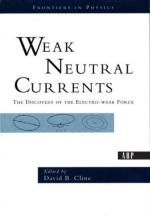|
This section contains 788 words (approx. 3 pages at 300 words per page) |

|
Antoine-Henri Becquerel's discovery of radioactivity in 1896 was also the indirect discovery of the weak nuclear force. Becquerel's photographic plate was fogged by beta particles (electrons) emitted by uranium nuclei in a process known as weak beta decay. A neutron sitting in a uranium nucleus becomes a proton while emitting an electron and an antineutrino. Physicists now understand that protons and neutrons are not fundamental particles, but rather are each composed of three quarks; at the most fundamental level, then, this process transforms a down quark into an up quark: Every type of particle, massive or massless, charged or neutral, quark or lepton, interacts via the weak force. In comparison, leptons do not feel the strong force, and neutral particles do not feel the electromagnetic force.
The first theory of weak interactions was devised by Enrico Fermi in 1933, and was quite successful in modeling beta decay, a...
|
This section contains 788 words (approx. 3 pages at 300 words per page) |

|


